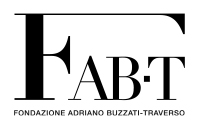8th Arturo Falaschi Lecture
Pavia, venerdì 17 Maggio 2019, ore 11:00
AULA “A. Falaschi“, IGM-Luigi Luca Cavalli-Sforza, Via Ferrata 9 – 27100 PAVIA
Prof. Tullio Pozzan – Head of the Department of Biomedical Sciences
National Research Council (CNR)
“Spatiotemporal heterogeneity of second messengers in living cells”
Tullio Pozzan graduated in Medicine in 1973 at the University of Padova, from 1978 to 1981 worked as post doc at the Department of Biochemistry in Cambridge (UK) and was nominated full Professor of General Pathology at the University of Ferrara in 1986. In 1990 he returned to the University of Padova where he served as Department chairman for 12 years. At present Prof. Pozzan is head of the Department of Biomedical Sciences of the National Research Council (CNR). His main scientific interest over the last 30 years has been the study of Ca2+ as a universal intracellular second messenger. His interests in Ca2+ signaling began with the characterization, in isolated organelles, of the mitochondrial Ca2+ homeostatic mechanisms. During the post doc, in collaboration with R.Y. Tsien (Nobel laureate in 2008), he participated to the development of the intracellular trappable fluorescent Ca2+ indicators and using these tools he clarified a number of key questions in cell activation. His research group developed the first genetically encoded probes with selective subcellular localization (targeted aequorins). This new approach lead to a series of novel discoveries on the mechanisms of subcellular Ca2+ handling and in particular to the understanding of how mitochondria participate in cellular Ca2+ handling. His present interests focus on a detailed description of the mechanisms of Ca2+ uptake and release in mitochondria in vivo, on the role of Ca2+ signaling in neuron-glia cross talk and on the role of altered mitochondrial Ca2+ handling in neurodegenerative diseases. Finally over the last years he became interested also in the signaling pathway controlled by the other universal intracellular messenger, cAMP. His group generated the first genetically encoded fluorescent cAMP probe and contributed to establishing the concept of cAMP microdomains. Recently he described the existence and regulation of an autonomous cAMP generation and hydrolysis mechanism within the matrix of mitochondria

